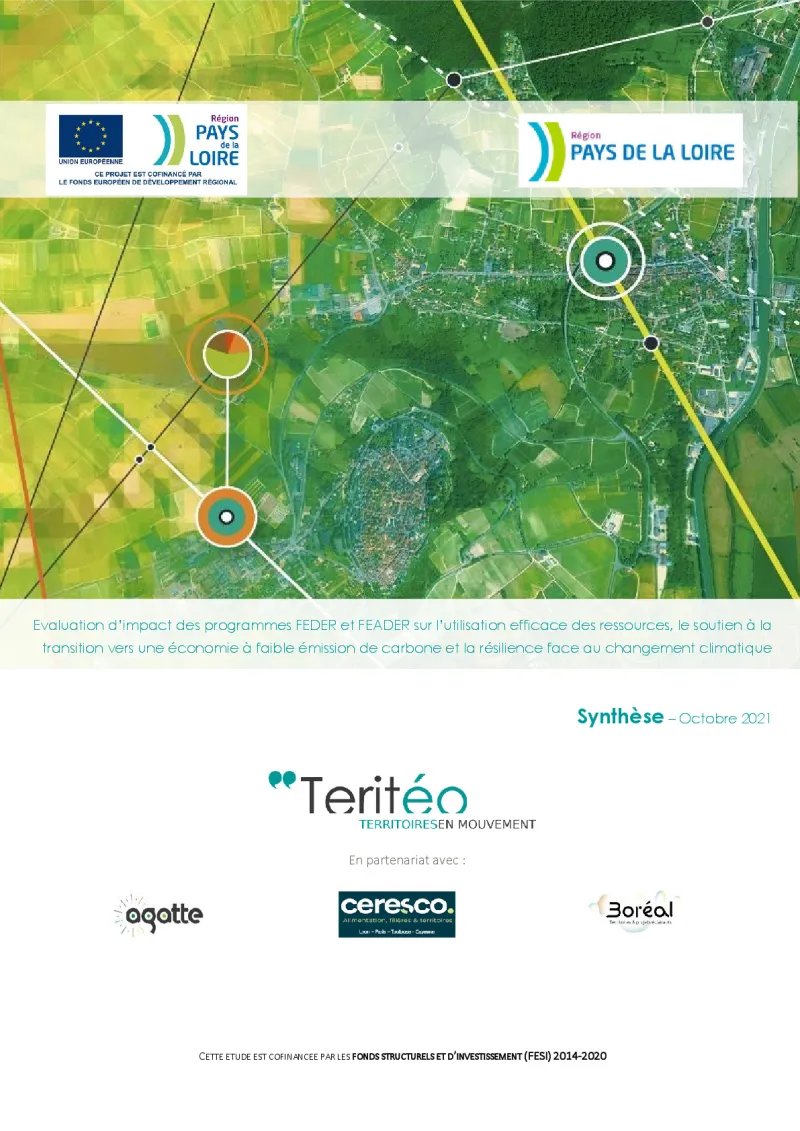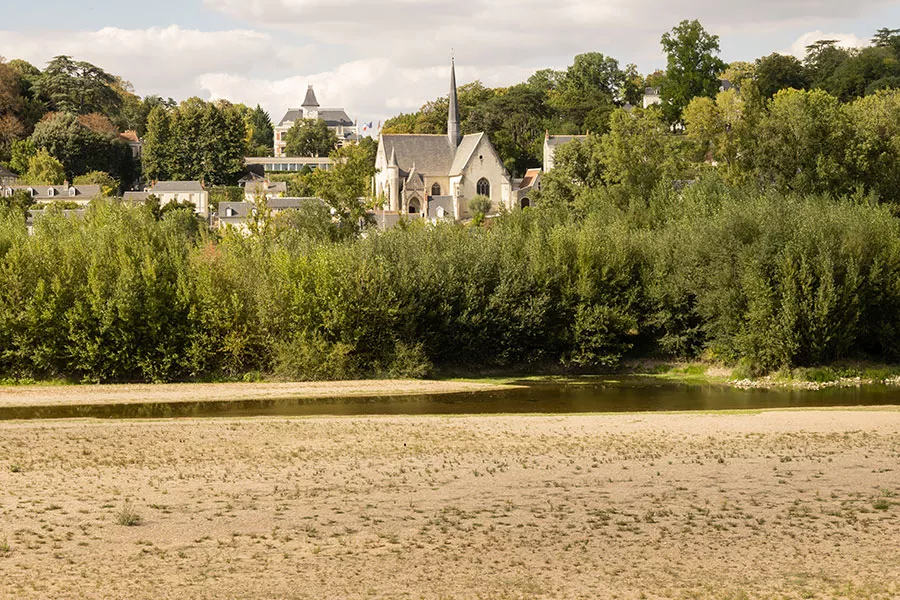ERDF and EAFRD impact assessment on resource efficiency, low-carbon economy and climate change resilience
The evaluation focuses on seven priority issues with the aim of contributing to resource efficiency, a low-carbon economy and climate change resilience in the Pays de la Loire region, France.
- France
- 2014-2022
- Environmental impacts


This impact assessment of the European Rural Development Fund (ERDF) and European Agricultural Fund for Rural Development (EAFRD) on resource efficiency and support for the transition to a low-carbon economy was conducted in 2021 for the Pays de la Loire region.
The evaluation focuses on seven priority points: 1) reporting on the usefulness of the actions and their contribution to achieving set objectives; 2) identifying the complementarity, coherence and co-piloting of actions under structural funds and those carried out in the context of regional policy; 3) identifying possible improvements in the content and implementation modalities in order to facilitate the next programming; 4) identifying whether the expected results are in the process of being achieved; 5) determining the mechanisms for success or obstruction; 6) identifying the share of change attributable to the funds in the development of the territory; and 7) developing reflections for the future ERDF and EAFRD programmes.
The first step of the study was an extensive literature review, followed by an analysis of monitoring and context data (i.e. performing financial physical balance sheet, analysis of output and result indicators, and valorisation of territorial socio-economic indicators), continued with a 2021-2027 regulatory impact analysis (REACT EU, National Recovery Plan) that enabled a mapping and geographic analysis data. Interviews with pilots and partners (30), heads of agricultural networks and a sample of ERDF/EAFRD/LEADER project holders were also conducted.
The end result was the formalisation of seven thematic and territorial focus and the organisation of two ERDF/EAFRD recommendations workshops.
The initial challenges identified in the ERDF/ERDF programmes’ intervention strategies for energy efficiency remain relevant. While the regional territory is experiencing overall favourable development on most identified indicators, the challenges to be addressed remain large and the programme strategy remains adapted to the needs of the territories. On mobilities, particularly urban and peri-urban, the regional situation appears to be more contrasting. This theme weighs heavily on the regional energy balance and asserts itself as a challenge for the future.
For the future, risks of competition between EU funds (e.g. REACT EU, FTJ) are to be anticipated, with a differential of simplicity, incentive and requirements that could prove to be unfavourable to the ERDF/EAFRD regional programmes.
At the strategic level, the evaluation found that the coherence of ERDF/EAFRD assistance with the main national and regional schemes (i.e. SRCAE, SRB, regional roadmap) appears to be satisfactory, even though some of these strategies have been adopted after the programmes.
On the impact side, the main lessons from the evaluation were drawn from the implementation of seven focuses and four thematic focuses on building energy efficiency, urban mobility, the ECCP and LEADER Competitiveness and Adaptation Plan
In the ERDF, five out of the ten output indicators have already exceeded the target for 2023, all of which have a favourable trajectory. While the individual results of the programme are very positive, they often remain insufficient to influence overall transition trends, so regional progress towards Europe 2020 targets remains mixed.
The overall impact of the ERDF on regional production capacity remains limited (+15.5 MW/+ 1% of capacity). Nevertheless, the effect is significant in terms of the methanisation of the agriculture sector.
The programme has very significantly contributed to absorbing energy strains in the field of social housing.
The effects of the renovation of the public and educational parks are also positive. The ERDF funds have made it possible to renovate 14 secondary schools almost exclusively from colleges, accounting for 2% of regional secondary schools.
On the transport side, it is still too early to measure the impact of projects supported in terms of attendance, in a context still deeply marked by the effects of the COVID-19 pandemic. But the first results in terms of greenhouse gas emissions and quality of reception are encouraging
A delay in implementation is observed on all financial indicators, the volumes of operations and the area of the targets defined during the elaboration of the Pays de la Loire Rural Development Programme (RDP). However, these seem mainly to be uninformative about the dimensions of the energy transition (see GAAP). On the other hand, qualitative analyses show a very strong orientation of programming on energy efficiency issues.
Author(s)
Teritéo, Ceresco, Agatte and Boréal